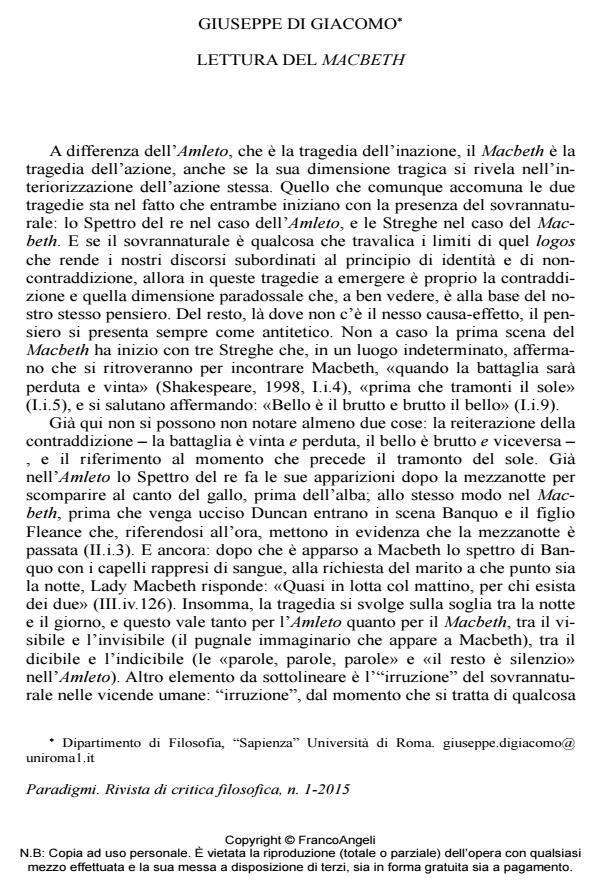A Reading of Macbeth
Journal title PARADIGMI
Author/s Giuseppe Di Giacomo
Publishing Year 2015 Issue 2015/1
Language Italian Pages 15 P. 111-125 File size 64 KB
DOI 10.3280/PARA2015-001008
DOI is like a bar code for intellectual property: to have more infomation
click here
Below, you can see the article first page
If you want to buy this article in PDF format, you can do it, following the instructions to buy download credits

FrancoAngeli is member of Publishers International Linking Association, Inc (PILA), a not-for-profit association which run the CrossRef service enabling links to and from online scholarly content.
Unlike Hamlet, which is the tragedy of inaction, Macbeth is the tragedy of action, even if its tragic quality reveals itself in the internalisation of action itself. What the two plays share, however, is the fact that they both start with the presence of the supernatural: the king’s Ghost in the case of Hamlet and the Witches in the case of Macbeth. And if the supernatural is something that exceeds the limits of logos - which subordinates our discourses to the principle of identity and noncontradiction -, then in these plays what emerges is precisely contradiction and that paradoxical dimension that, upon closer inspection, lies at the basis of our thought itself. Another main theme is time: a linear time which is burst by the Witches’ circular time, thus losing any possibility of redemption, that is of sense. What results is modern tragic time, in which Being has disappeared and whose fragmentary nature presents itself as a meaningless sum of "tomorrows", a creeping from one point to another until the end of time. Parole chiave: Azione, Immaginario, Male, Sangue, Sovrannaturale, Temporalità (circolare, lineare, simbolica).
Keywords: Action, Blood, Evil, Imaginary, Supernatural, Temporality (circular, linear, symbolic).
Giuseppe Di Giacomo, Lettura del Macbeth in "PARADIGMI" 1/2015, pp 111-125, DOI: 10.3280/PARA2015-001008